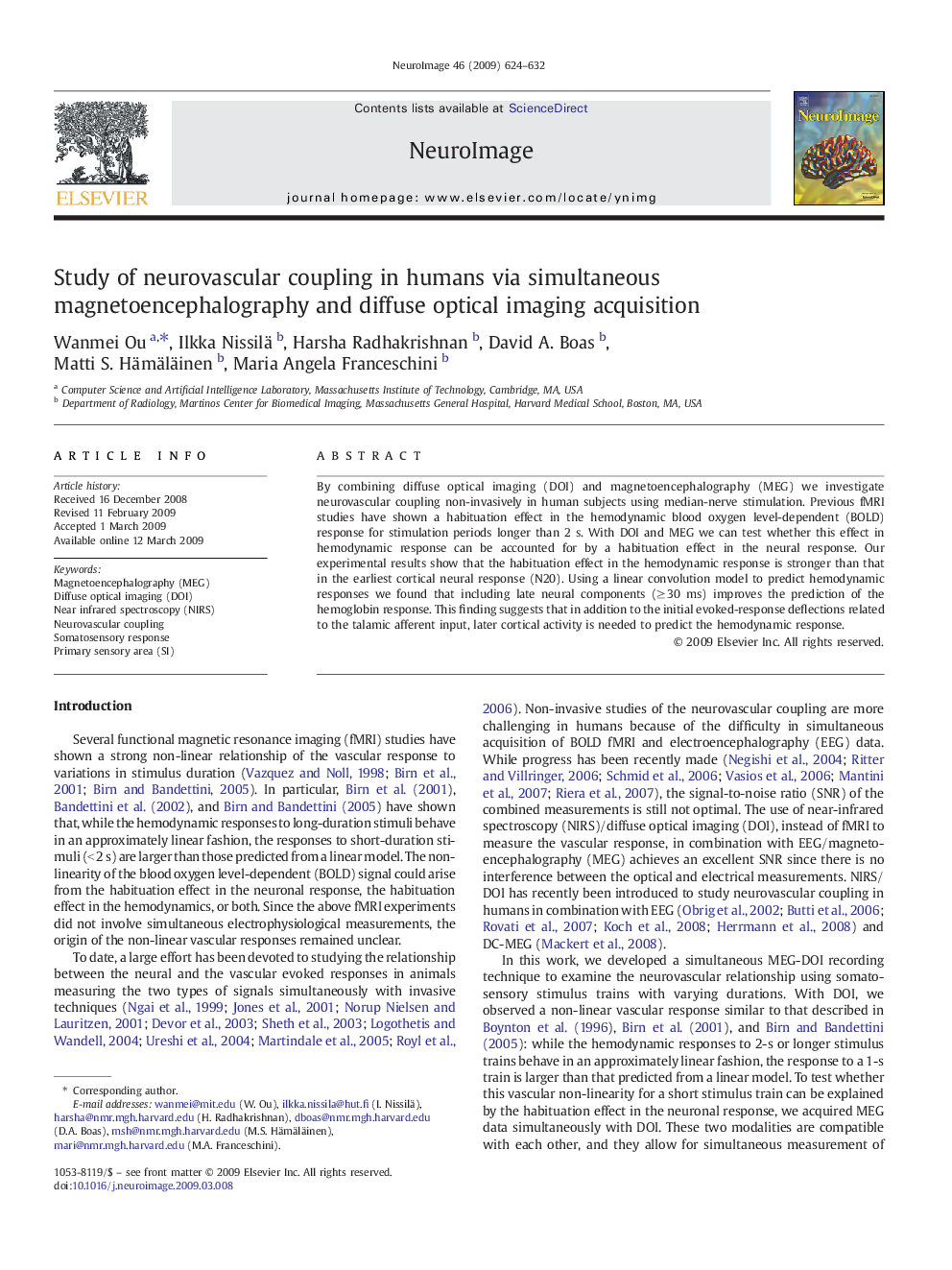| Article ID | Journal | Published Year | Pages | File Type |
|---|---|---|---|---|
| 6037847 | NeuroImage | 2009 | 9 Pages |
Abstract
By combining diffuse optical imaging (DOI) and magnetoencephalography (MEG) we investigate neurovascular coupling non-invasively in human subjects using median-nerve stimulation. Previous fMRI studies have shown a habituation effect in the hemodynamic blood oxygen level-dependent (BOLD) response for stimulation periods longer than 2 s. With DOI and MEG we can test whether this effect in hemodynamic response can be accounted for by a habituation effect in the neural response. Our experimental results show that the habituation effect in the hemodynamic response is stronger than that in the earliest cortical neural response (N20). Using a linear convolution model to predict hemodynamic responses we found that including late neural components (â¥Â 30 ms) improves the prediction of the hemoglobin response. This finding suggests that in addition to the initial evoked-response deflections related to the talamic afferent input, later cortical activity is needed to predict the hemodynamic response.
Related Topics
Life Sciences
Neuroscience
Cognitive Neuroscience
Authors
Wanmei Ou, Ilkka Nissilä, Harsha Radhakrishnan, David A. Boas, Matti S. Hämäläinen, Maria Angela Franceschini,
